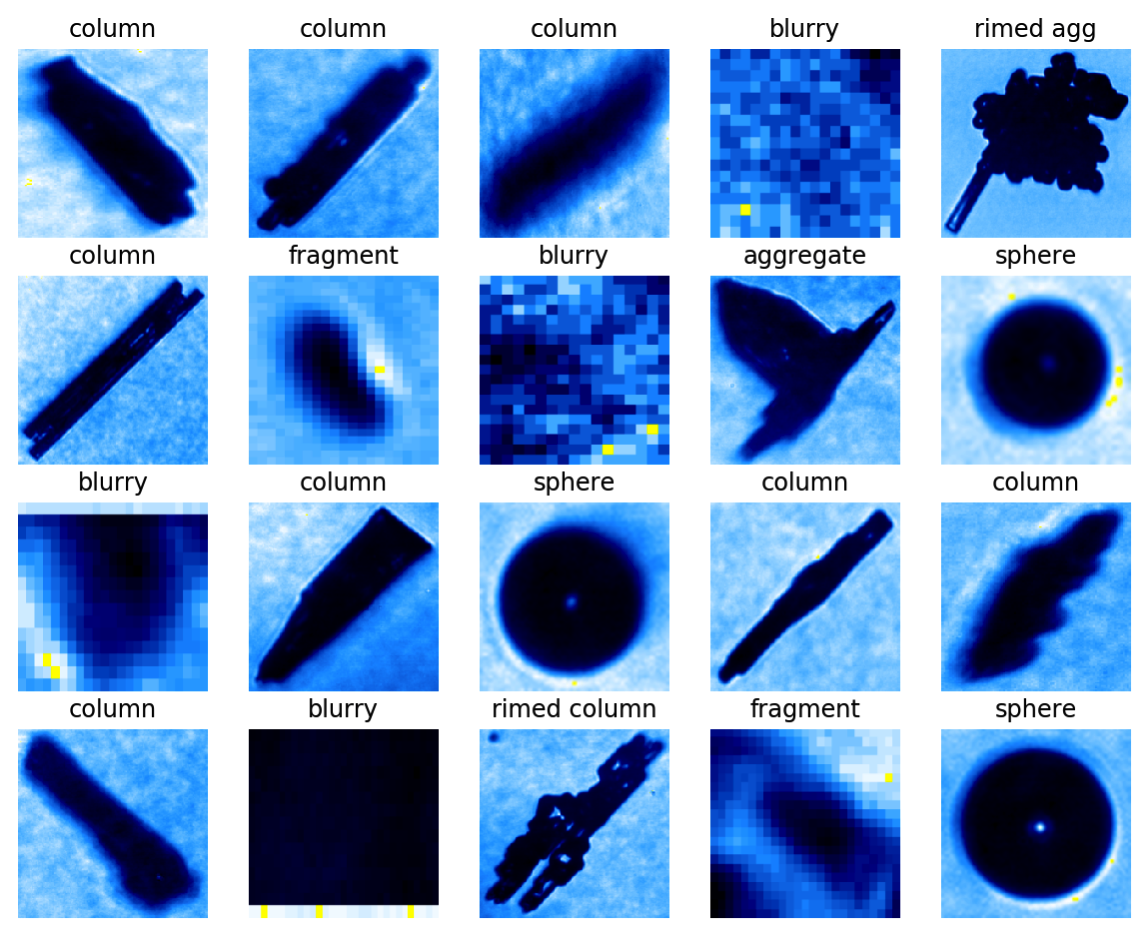Archiving Ice Shapes: A Heavy Lift for Science
Published: 16 February 2021
Kara Sulia, an ASR researcher, uses ARM data for an ice-particle shape project

From 2000 to 2020, eight atmospheric science field campaigns deployed specialty cameras mounted on the underside of research aircraft to sweep up 8.6 million images from which a database of ice crystals and cloud water droplets was established. All eight campaigns (and others that will add to the database later) were funded at least in part by the U.S. Department of Energy (DOE). These campaigns include two conducted by the Atmospheric Radiation Measurement (ARM) user facility in Alaska—the Mixed-Phase Arctic Cloud Experiment (M-PACE) and the Indirect and Semi-Direct Aerosol Campaign (ISDAC).
The data are at the heart of a long-term project underway at the University at Albany, State University of New York. The project, which recently started a cycle of funding through DOE’s Atmospheric System Research (ASR), employs machine learning to characterize and categorize ice particles.
Leading the Classification of Cloud Particle Imagery and Thermodynamics (COCPIT) project is Kara Sulia, an ice-crystal growth theorist at Albany’s Atmospheric Sciences Research Center.

Data being used for the project include cloud particle imager (CPI) data from M-PACE and ISDAC, field campaigns conducted around ARM’s North Slope of Alaska atmospheric observatory. The bullet-shaped CPI, mounted beneath the aircraft, has a tube-shaped sampler where particles passing through are snapped at 75 frames a second, with each frame capturing about 25 particle images. (Upgraded CPIs are now capable of 500 frames per second.)
Sulia’s vision is to categorize ice-crystal images by shape, then create linked metadata that records contextual information. This would include information about the particles themselves, the environment in which they were captured (temperature and altitude, for instance), and the field campaign from which the images originated.
Through COCPIT, says Sulia, researchers can “easily fetch, filter, and analyze these data, and perhaps get a better handle on the system they are investigating.”
Learn about Sulia and her work in this scientist profile on the ASR website.
Keep up with the Atmospheric Observer
Updates on ARM news, events, and opportunities delivered to your inbox
ARM User Profile
ARM welcomes users from all institutions and nations. A free ARM user account is needed to access ARM data.


















